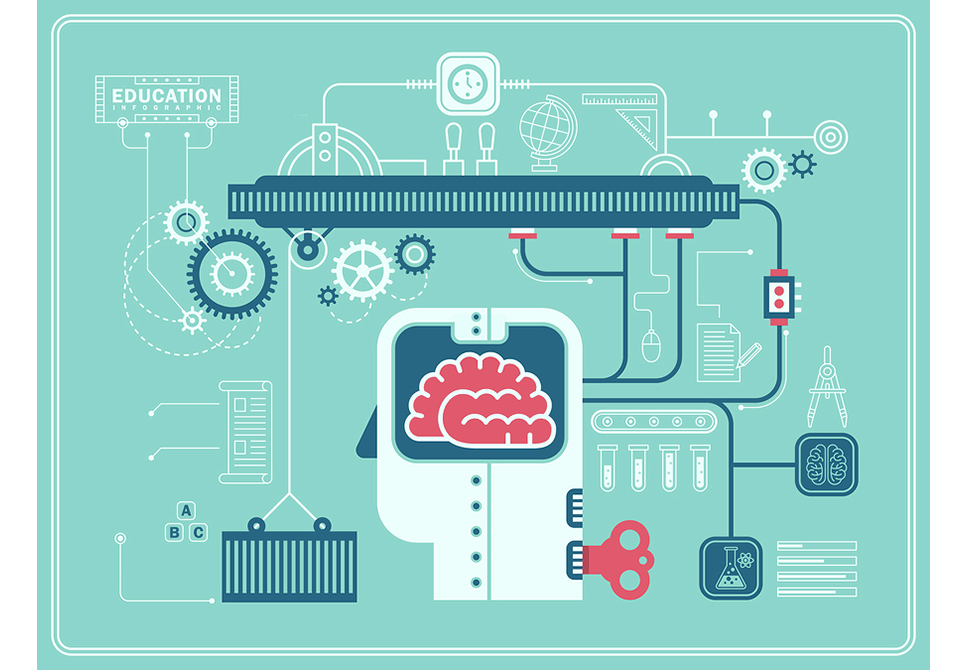Machine Learning: The New Infrastructure for Everything

The first half of the information age was programming computers to do what we want. In the second half of the information age computers will program themselves.
Over the last 30 years, coding capabilities grew at a phenomenal rate topped only by the amount of data being produced and the complexity of the problems we face. Enter the rise of machine learning–programming computers to learn from data. With a good machine learning algorithm more data means more learning.
Pedro Domingos of the University of Washington thinks of machine learning as the practical subset of artificial intelligence–the new hub of efforts to add intelligence to every facet of life.
In his new book, The Master Algorithm: How the Quest for the Ultimate Learning Machine Will Remake Our World, he reminds us that we continuously interact with computers–we’re continuously teaching computers what we are like. Results come back from Amazon as recommendations for books and from Netflix as recommendations for movies.
His new book illustrates how machine learning has drawn from neuroscience, evolution, psychology, physics, and statistics to build better algorithms.
Domingos said, “Machine learning touches everybody and every aspect of their lives,” to Katherine Gorman on the Talking Machines podcast.
He wrote the layperson’s guide to machine learning to raise the consciousness and advance the field. Once we realize that machine learning is running in the background of our lives, we may be unhappy with the status quo because algorithms can only infer our behavior. You currently can’t tell the Zappos algorithm that you just bought sandals and don’t need another pair. (I can’t tell the Performance Bike ad machine that I bought a road bike at the local store and don’t need another one).
Edu implications. A Rice University summer program recognized that “recent advances in machine learning provide new opportunities to tackle the above challenges by collecting and analyzing the data students generate when they interact with a learning system.” They noted recent progress in:
- Learning analytics that build statistical models of student knowledge to provide computerized and personalized feedback on learning the students’ progress and their instructors;
- Content analytics that organize and optimize content items like assessments, textbook sections, lecture videos, etc.;
- Scheduling algorithms that search for an optimal and adapted teaching policy that helps students learn more efficiently;
- Grading systems that assess and score student responses to assessments and computer assignments at large scale, either automatically or via peer grading;
- Cognitive psychology, where data mining is becoming a powerful tool to validate the theories developed in cognitive science and facilitate the development of new theories to improve the learning process and knowledge retention; and
- Active learning and experimental design, which adaptively select assessments and other learning resources for each student individually to enhance learning efficiency.
For elementary and secondary education, the rise of machine learning makes algebraic and probability thinking more important than ever. It highlights the importance of introducing coding early the way Park City has done with support from BoardDocs.
For universities, machine learning, according to Domingos, is the new academic switchboard. Departments work in silos but “all fields talk to machine learning.”
Educators and EdTech vendors must continue to develop ways to advance personalized learning while ensuring student privacy. Parent managed learner profiles are likely to be an important part of the K-12 solution.
As Domingos notes, machine learning professional must continue to engage in discussions about privacy and the future of work.
This second phase of the information age, the rise of machine learning, will produce tremendous benefit. It will boost global access to personalized learning and power low cost school models (#7, #16, #17 on our list of 20 #SmartPlanet innovations), help solve major health crises, and develop new energy sources. We need to take advantage of it, limit its inappropriate use, and add civic capacity to harness it.
For more check out:




P. Teague
Correct. Refreshing to see an informeded view.
Ryan Jack
What a wonderful article.